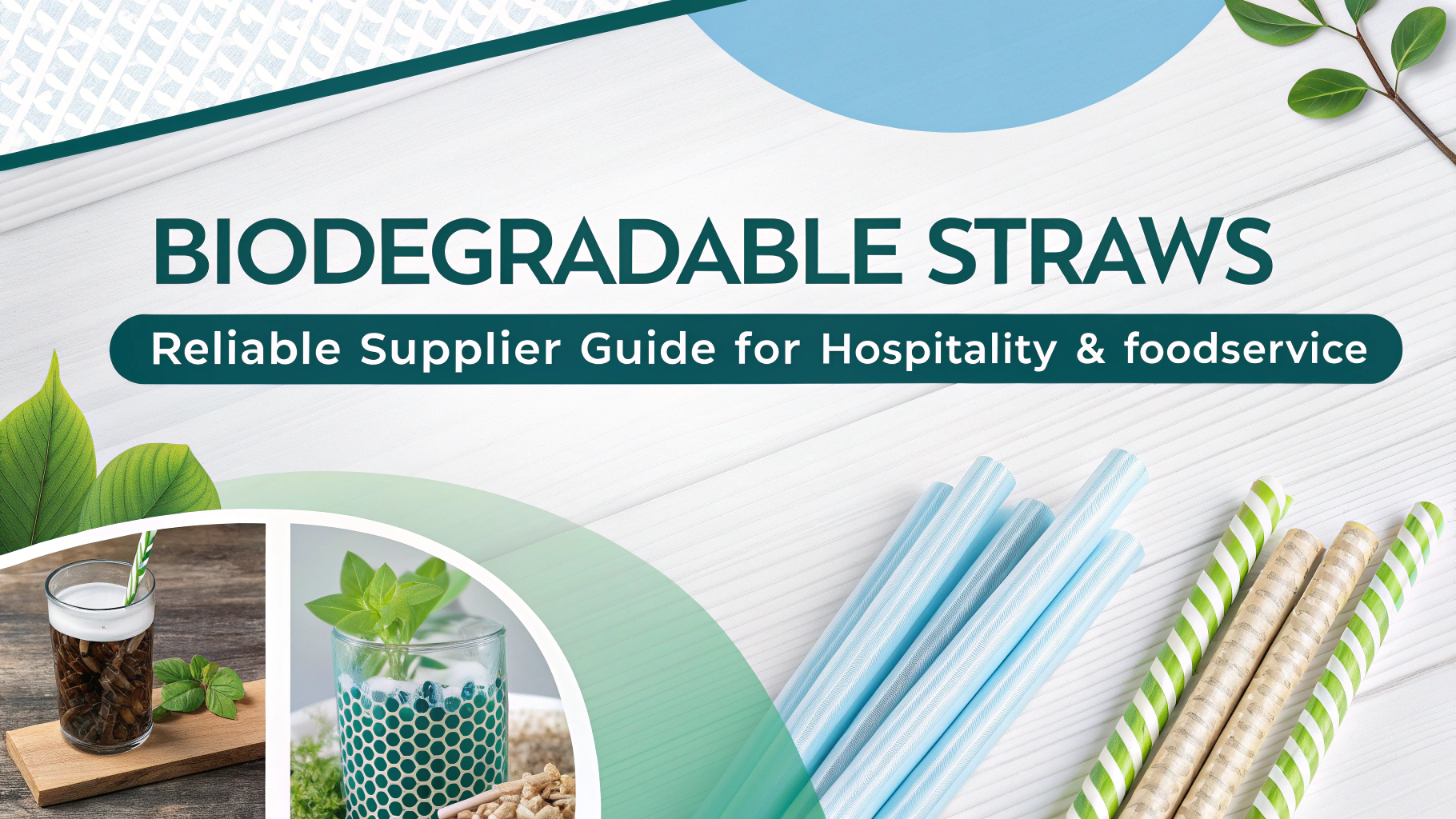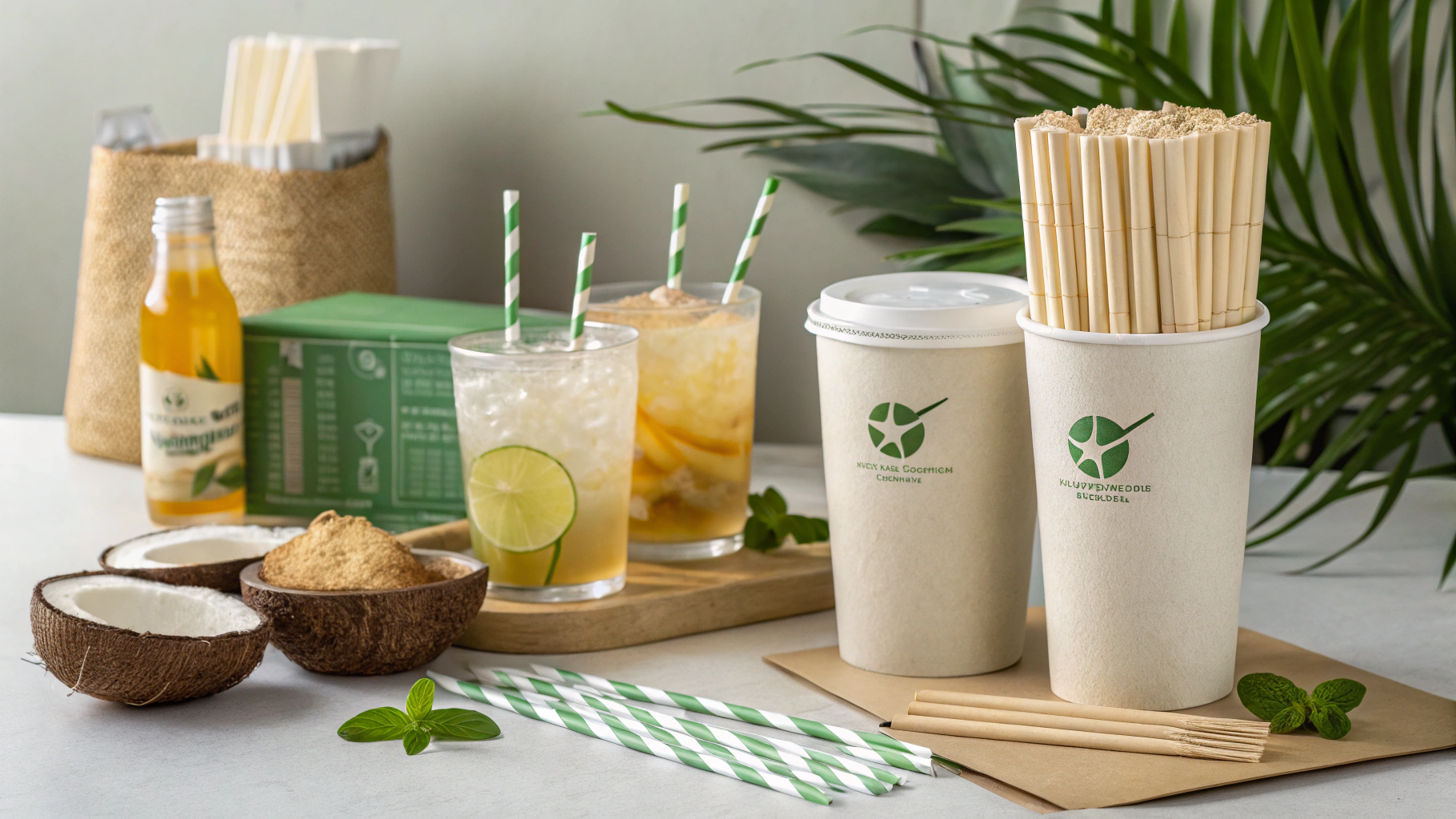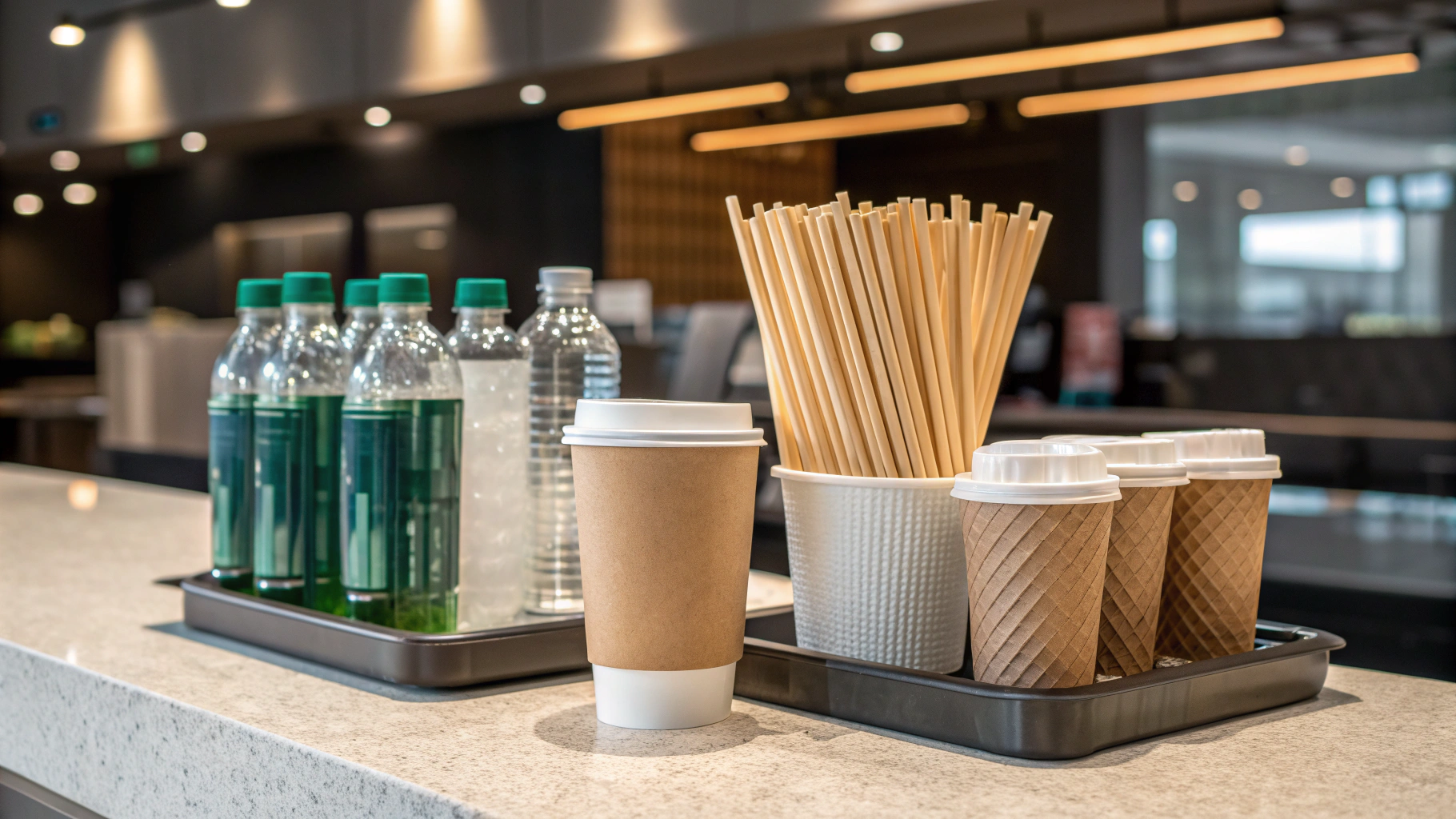The shift away from single-use plastics isn’t just an environmental trend; it’s a critical business imperative reshaping global procurement and operational strategies. Procurement managers, operations directors, and sustainability officers across the US and Europe are grappling with mounting pressure to adopt greener solutions, particularly for high-volume consumables like drinking straws. The stakes are significant: ignore this shift, and companies risk not only regulatory non-compliance but also a substantial erosion of brand trust and market share. The global eco-friendly straws market, estimated at approximately USD 12.3 billion in 2025, is projected to nearly double to USD 25.1 billion by 2035, underscoring an irreversible transition. This isn’t merely about consumer preference; it’s about navigating a complex landscape of evolving legislation, supply chain resilience, and a profound redefinition of corporate social responsibility. Businesses failing to adapt face operational bottlenecks, punitive fines, and a significant commercial disadvantage in an increasingly conscious marketplace where 80% of consumers actively prefer eco-friendly options.
The journey toward sustainable sipping has a long history, yet the urgency for “environmentally friendly” alternatives is a relatively modern phenomenon. For millennia, straws were made from natural materials – from Sumerian gold and lapis lazuli tubes in 3000 BCE to 19th-century rye grass. However, the 1960s saw the pervasive rise of inexpensive, durable plastic straws, which replaced their paper predecessors (first patented in 1888 by Marvin Stone) to become ubiquitous. This convenience came at a monumental environmental cost, transforming a simple utensil into a symbol of global pollution. The turning point for public consciousness often traces back to a viral 2015 video depicting a plastic straw being removed from a sea turtle’s nostril, igniting the “anti-plastic straw” movement and propelling discussions on marine plastic waste into the mainstream.

Today, this global outcry has translated into tangible regulatory action. The European Union’s Single-Use Plastics Directive, for example, has effectively banned plastic straws and other single-use items since 2021, compelling businesses across its member states to pivot their procurement strategies. (Source:European Commission). In the United States, various states and cities, such as Seattle (which banned them in 2018) and California (implementing “straw upon request” in 2019), have enacted similar restrictions. This legislative pressure, combined with heightened consumer environmental consciousness, means that procurement managers can no longer view sustainable straws as a niche offering but as a core component of operational compliance and customer experience. The challenge extends beyond merely finding a replacement; it involves understanding the true lifecycle impact of alternatives and aligning with broader waste reduction and circular economy initiatives. This shift impacts everything from supply chain logistics to the very perception of a brand’s commitment to sustainability, influencing whether a business is seen as a responsible leader or a laggard. For a deeper dive into the broader sustainable material landscape, exploring diverse applications likeenvironmentally friendly packaging solutionscan offer valuable insights for comprehensive green initiatives.
Strategic Choices for Sustainable Operations: A Deep Dive into Eco-Friendly Straws
Moving beyond the recognition of the problem, the critical next step for businesses is to strategically select solutions that align with their operational needs, brand values, and long-term sustainability goals. The market now offers a diverse array of eco-friendly drinking straws, each with distinct advantages and considerations.
Single-Use Biodegradable & Compostable Options
For many businesses, particularly in high-volume foodservice, single-use biodegradable and compostable options remain essential.
- 紙ストロー: Made from renewable resources, high-quality versions can now resist sogginess for extended periods thanks to advanced coatings. They are widely available and offer excellent customization for branding. Many paper straws are designed to decompose in 2-6 weeks. However, their production can be resource-intensive, requiring significant water and wood, and may have a higher carbon footprint than traditional plastic. Crucially, a significant controversy surrounds the potential presence of “forever chemicals” (PFAS) in many paper and bamboo straws, used to improve durability, which can hinder decomposition and pose health risks. Businesses must prioritize sourcing PFAS-free paper straws and look for certifications like FSC (Forest Stewardship Council) and FDA approval, as well as BPI (Biodegradable Products Institute) for industrial composting.
- Business Impact: Cost-effective, strong branding opportunities, but requires careful sourcing to avoid “forever chemicals” and ensure true biodegradability.
- PLA (Polylactic Acid) Straws: Derived from plant-based materials like corn starch or sugarcane, PLA straws closely mimic the feel and durability of traditional plastic without relying on fossil fuels. They are typically BPA-free. The main drawback is their requirement for specific industrial composting facilities to break down effectively; they won’t degrade in home composts or landfills, limiting their real-world environmental benefit if not disposed of correctly.
- Business Impact: Good user experience, plant-based credentials, but necessitates access to industrial composting infrastructure and clear customer education on disposal.
- PHA (Polyhydroxyalkanoate) Straws: These represent a significant leap forward. Produced by microorganisms, PHA straws are truly biodegradable across various environments, including industrial and home composting, soil, and even marine ecosystems, without leaving microplastics. They are made from renewable sources and offer good durability. The primary hurdle is their higher cost and currently limited supply, though these are expected to improve with scaling production. For instance, Wincup’s distribution of the “Phade straw” in 2021 highlights early market adoption of PHA technology, signaling a move towards high-performing, genuinely biodegradable solutions.
- Business Impact: Premium sustainability offering, excellent environmental credentials, strong market differentiator, positioning the business at the forefront of eco-innovation.
- Wheat Straws: Made from the stalks of wheat plants, an agricultural byproduct, these offer a genuinely zero-waste, 100% natural, and biodegradable solution. They are durable in both hot and cold beverages and are naturally gluten-free as they are derived from the stem, not the grain. Some sources indicate they can be more costly than conventional plastics.
- Business Impact: Strong natural aesthetic, aligns with organic and eco-conscious branding, excellent story for consumer engagement.
- Reed (Grass) Straws: Similar to wheat straws, these are crafted from abundant grass plant stems, making them fully biodegradable and compostable. They are durable and suitable for all beverage temperatures, offering a distinctive natural appearance.
- Business Impact: Unique, natural offering, suitable for brands emphasizing authenticity and ecological commitment.
- Other Plant-Based Options: The market is rapidly expanding with innovative materials like sugarcane (bagasse)、 rice and tapioca starch、 agave, and even コーヒーグラウンドストロー. Many of these utilize agricultural waste, boast high durability, are fully biodegradable, and are taste-neutral. Sugarcane straws, for instance, are sturdy and home compostable, while rice straws can even be edible.
- Business Impact: Diverse aesthetic options, strong sustainability narratives, some offer unique functional benefits like edibility.

Reusable Straw Innovations
For operations prioritizing maximum waste reduction and a premium, long-term solution, reusable straw innovations are a compelling choice.
- ステンレスストロー: Extremely durable, long-lasting, and 100% recyclable. They are dishwasher safe and do not leach chemicals. However, they conduct heat/cold, can pose a safety risk for children or if bitten due to hardness, and their opaque nature makes internal cleaning a visual challenge. Some users report a metallic aftertaste. To offset their production impact, metal straws need to be used at least 37 times compared to plastic. (Source: Anthropocene Magazine).
- Business Impact: Robust for in-house use (e.g., bars, full-service restaurants), significant long-term cost savings, reduced waste volume, requires cleaning protocols and potentially silicone tips for comfort/safety.
- Glass Straws: Made from durable, non-toxic borosilicate glass, these are safe for hot and cold drinks, transparent for easy cleaning inspection, and taste-neutral. Their smooth mouthfeel offers a premium experience. While durable, they can break if dropped. Production requires significant energy, and silica sand extraction can have environmental impacts.
- Business Impact: Elevates brand image in high-end establishments, excellent for presentation, clear visibility for hygiene, requires careful handling.
- 竹ストロー: Highly sustainable due to bamboo’s rapid growth without pesticides. They are naturally antibacterial, biodegradable, and offer an authentic, natural aesthetic. However, they can impart an earthy taste, are often not dishwasher safe, and their porous nature requires thorough manual cleaning to prevent mold or cracking, leading to a shorter lifespan than other reusable options.
- Business Impact: Appeals to natural and rustic themes, strong eco-story, requires specific cleaning and drying protocols, better suited for certain beverage profiles.
- Silicone Straws: Flexible, durable, and soft, making them ideal for children and those who bite straws. They are heat and cold resistant, dishwasher safe, and free from BPA/phthalates. While reusable, they are not biodegradable and may not be widely recyclable through curbside programs.
- Business Impact: Prioritizes safety and comfort, particularly in family-friendly or healthcare settings, durable but not a “circular economy” disposal solution.

Choosing the Right Straw for Your Business: A Comparative Analysis
To streamline your decision-making, consider this strategic matrix, evaluating each option against key business criteria:
| 特徴 | B2Bインパクト | Compliance Risk | ROIポテンシャル |
|---|---|---|---|
| 紙(PFAS-free) | Broad appeal, customizable branding, familiar | Low (if certified & PFAS-free) | Moderate (initial cost higher, but disposable) |
| PLA | Plastic-like feel, eco-conscious messaging | High (if no industrial composting access) | Moderate (disposal costs if not composted) |
| PHA | Premium eco-status, true biodegradability | Low (broad degradability) | High (long-term brand value, potential future cost reductions) |
| Wheat/Reed | Natural/organic brand alignment, unique | Low (natural, biodegradable) | Moderate (niche appeal, varying cost) |
| Sugarcane/Rice | Innovative, waste-reducing, strong eco-story | Low (often home compostable) | Moderate-High (brand differentiation) |
| ステンレス鋼 | Durable, premium, reusable | Low (reusable, but cleaning protocols needed) | High (long-term cost savings, asset) |
| ガラス | High-end appeal, hygiene visibility | Moderate (breakage risk) | High (premium experience, asset) |
| 竹 | Authentic, rustic, sustainable | Low (biodegradable, but short lifespan) | Moderate (niche appeal, replacement cost) |
| シリコーン | Safety-focused, kid-friendly, durable | Low (reusable, but not biodegradable) | Moderate (longevity, but not end-of-life eco-friendly) |
Navigating Certifications:For any single-use biodegradable or compostable straw, certifications are paramount. Look for the生分解性製品研究所(BPI)またはTúV Austria(for industrial composting), orCMA(Compost Manufacturing Alliance). For truly bio-based content,USDA BioPreferredis relevant. These certifications ensure that products meet rigorous standards for decomposition and environmental safety. For instance, Veggie Straws are certified by USDA BioBased, ASTM, and ISO International, while HAY! Straws Original wheat straws are BPI certified and compost in 42 days.
Navigating the Green Wave: Key Industry Insights for Business Leaders
The eco-friendly straws market is not just growing; it’s evolving rapidly. Projections show the market reaching USD 25.1 billion by 2035 with a 7.3% CAGR, led by paper straws capturing a 44.3% share of the compostable segment by 2025. Regional dynamics highlight Asia-Pacific as the fastest-growing market, while North America and Europe lead in early adoption due to stringent regulations and consumer demand.
A critical point for procurement is thePFAS controversy. Recent studies in Europe have found that a majority of paper and bamboo straws tested contained poly- and perfluoroalkyl substances (“forever chemicals”). These chemicals, used for water resistance, are persistent, potentially harmful to health and the environment, and undermine biodegradability claims. (Source:ScienceDaily). Rigorous supplier vetting forPFAS-free productsis essential for maintaining brand integrity and true sustainability.

Moreover, while plastic straw bans are a visible starting point, a comprehensiveLife Cycle Assessment (LCA)is crucial. The environmental impact extends beyond disposal to include raw material extraction, manufacturing processes, and transportation. This holistic view is vital for true environmental stewardship, pushing beyond mere “plastic-free” claims to evaluate the full ecological footprint.
Supply chain resiliencealso becomes a key concern. As demand for these diverse materials grows, securing reliable, ethically sourced, and sustainably manufactured products is paramount. Companies must anticipate shifts and build robust supply networks. Consumer sentiment, with 80% preferring eco-friendly options, creates a strong opportunity for enhanced brand image and customer retention. However, businesses must also addressaccessibility concerns, ensuring that a shift away from flexible plastic straws does not disadvantage individuals with disabilities who rely on them for independent drinking. Thoughtful provision of suitable alternatives is a social responsibility.
Emerging Innovations: The Future Landscape
Looking forward, the next 5-10 years are set to transform the sustainable straw landscape. Researchers are developingbacterial cellulose strawsthat are stronger than paper and comparable in cost to plastic, breaking down without industrial composting. Seaweed and carrageenan straws, often edible, promise quick degradation and novel applications. Innovations also include ultra-strong, hydro-stable wood straws infused with chitosan, which are cost-effective and can even be made with a bendable feature. Additionally, advancements in AI-powered automation are set to revolutionize manufacturing, optimizing supply chains and reducing waste in eco-friendly straw production, ensuring scalability and customization. To explore robust and truly sustainable options, particularly regarding the very foundation of eco-friendly packaging, understandingwhat constitutes the most environmentally friendly type of packagingcan provide a foundational perspective for holistic material sourcing.
Paving Your Path to Sustainable Operations
Paving your path to sustainable operations requires a methodical approach. Begin by conducting a thorough internal assessment of your current straw usage, waste streams, and specific operational needs, whether you’re a quick-service restaurant, a fine dining establishment, or a food delivery service. This granular understanding will inform pilot programs where you can test different eco-friendly straw types in real-world scenarios, gathering invaluable feedback on durability, user experience, and disposal logistics. Concurrently, rigorously vet potential suppliers, scrutinizing their certifications (BPI, TúV Austria, USDA BioPreferred) for authenticity, transparency in material sourcing (especially for PFAS-free claims), and consistency in product quality.
Effective communication is equally vital. Educate your staff on the new sustainable choices and proper disposal protocols, empowering them to answer customer queries confidently. Extend this education to your customers, clearly communicating your sustainable commitment and guiding them on how to correctly dispose of compostable items to maximize their environmental benefit. By proactively embracing these shifts, you not only ensure compliance with evolving regulations but also future-proof your business, mitigating risks and enhancing brand value. Strategic partnerships with certified eco-friendly product suppliers and specialized waste management companies will further optimize your sustainability efforts, creating a resilient and responsible supply chain.
The future of sustainable sipping is not a distant vision—it is an immediate opportunity. Embracing innovation in environmentally friendly drinking straws allows businesses to lead the charge in environmental stewardship, demonstrating tangible commitment to a healthier planet. By quantifying cost savings through reduced waste penalties, enhancing brand loyalty, and capturing a significant share of the burgeoning eco-conscious market, your organization can realize substantial, measurable benefits. Don’t just adapt; differentiate and dominate. We invite you to explore tailored solutions and consult with our experts to craft a sustainable straw strategy that elevates your brand and optimizes your operations.Learn how to source environmentally friendly drinking straws。
よくある質問
Single-use options: paper (PFAS-free improved), PLA (Polylactic Acid), PHA (Polyhydroxyalkanoate), wheat, reed (grass), sugarcane, rice, agave, and coffee ground straws.
Reusable options: stainless steel, glass, bamboo, and silicone straws.
Key considerations include initial and long-term costs, durability, disposal complexity, user experience, environmental impact (including PFAS risk and LCA), and relevant certifications. Supplier vetting for transparency and product consistency is also vital, along with educating staff and customers on sustainable choices and disposal.






